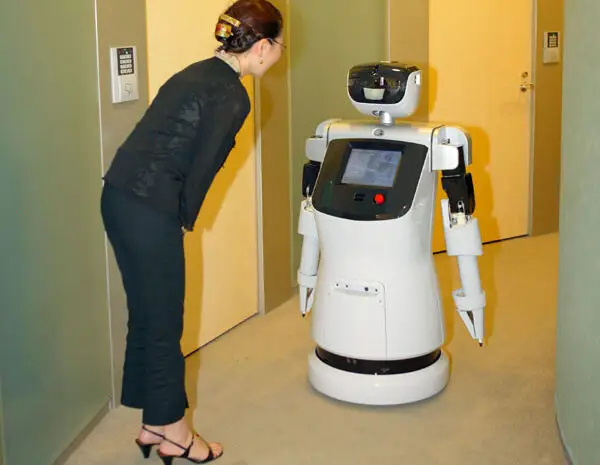The age of the Service Robots

For many years robots have been an indispensable part of industrial production. Over the next three years 1.3 million additional production robots will enter service. How far has research in robotics and artificial intelligence come? In what direction is development going? Will robots replace humans one day? A conversation with Frank Kirchner, Head of Research Department of the Robotics Innovation Center at the German Research Center for Artificial Intelligence in Karlsruhe, on the state of things.
What is Artificial Intelligence? Artificial Intelligence is an attempt to transfer intelligent partial services to technical systems. A distinction is made between cognitive overall performance, which a person has, and cognitive part performance. The latter means, for example, the ability to understand spoken language. If a robot is thus able to understand spoken language and respond to it, it has a cognitive part performance.
The application range of robots is now very diverse. The first class is found mainly in the field of production. A familiar example is the automotive industry. Here robotic arms are used which can perform certain operations autonomously. Other areas include aircraft production, underwater robotics and production of computer chips. “This class includes frequent and repetitive tasks speed, precision and production in large quantities,” explains Frank Kirchner, Head of Research Department of the Robotics Innovation Center at the German Research Center for Artificial Intelligence (DFKI).
The second class of robot variant includes expanded capabilities. Service is a big topic here. “There are robots that assist in food distribution in hospitals or propelled Info points at fairs. In the Far East they are also used in nursing. However, robots do not wash or care for the patients, but talk to them, read stories or manage the medication “says Kirchner. Factor Entertainment thus plays a major role here.
Germany carries out extensive research into robotics and artificial intelligence and more funding is being allocated to the field. Germany actually is an exception with so many diverse research groups dedicated to the issue. The situation is different on university curriculums where robotics is not yet adequately represented. “Basics such as mathematics, computer science, physics and electrical engineering are of course present, but there is rarely a separate course of study. I’m arguing with my own university in Bremen for a Master’s course in Robotics,” Kirchner says with a smile.
Increasingly, advances in the cooperation between robots and humans have come to the foreground. And the trend is towards service robotics – man and machine working together. On the question of whether robots will really replace humans one day, Kirchner responds: “activities that are uncomfortable and cumbersome for humans, such as upside down operations as part of car production, will to some extent be replaced by robots.”
“However, the variety of cognitive abilities of man cannot be replaced. If arduous jobs get technical support it could mean an increase in length and quality of life for people. Many workers want to work longer hours, are fit but not able to do so.”
“In Germany we have a demographic problem. The population is ageing and we lack sufficient younger recruits. The technical assistance of robots is a great opportunity to get this problem under control,” argues the expert.
These and other issues will be discussed in detail at RAID Conference & Exhbition 2016, which takes place in the Jaarbeurs Utrecht on 31 May and 1 June 2016.




